Top destinations in Cameroon
Cameroon, located in Central Africa, is a diverse and beautiful country known for its stunning landscapes, rich cultural heritage, and abundant wildlife. Here are some of the most intriguing destinations to visit in Cameroon:
1. Rhumsiki
Rhumsiki, a scenic village in the Mandara Mountains (Far North Region of Cameroon, near the border with Nigeria), is famous for its unique rock formations, rich cultural heritage, traditional huts, and the cultural traditions of the Kapsiki people.
Here is detailed information about Rhumsiki:
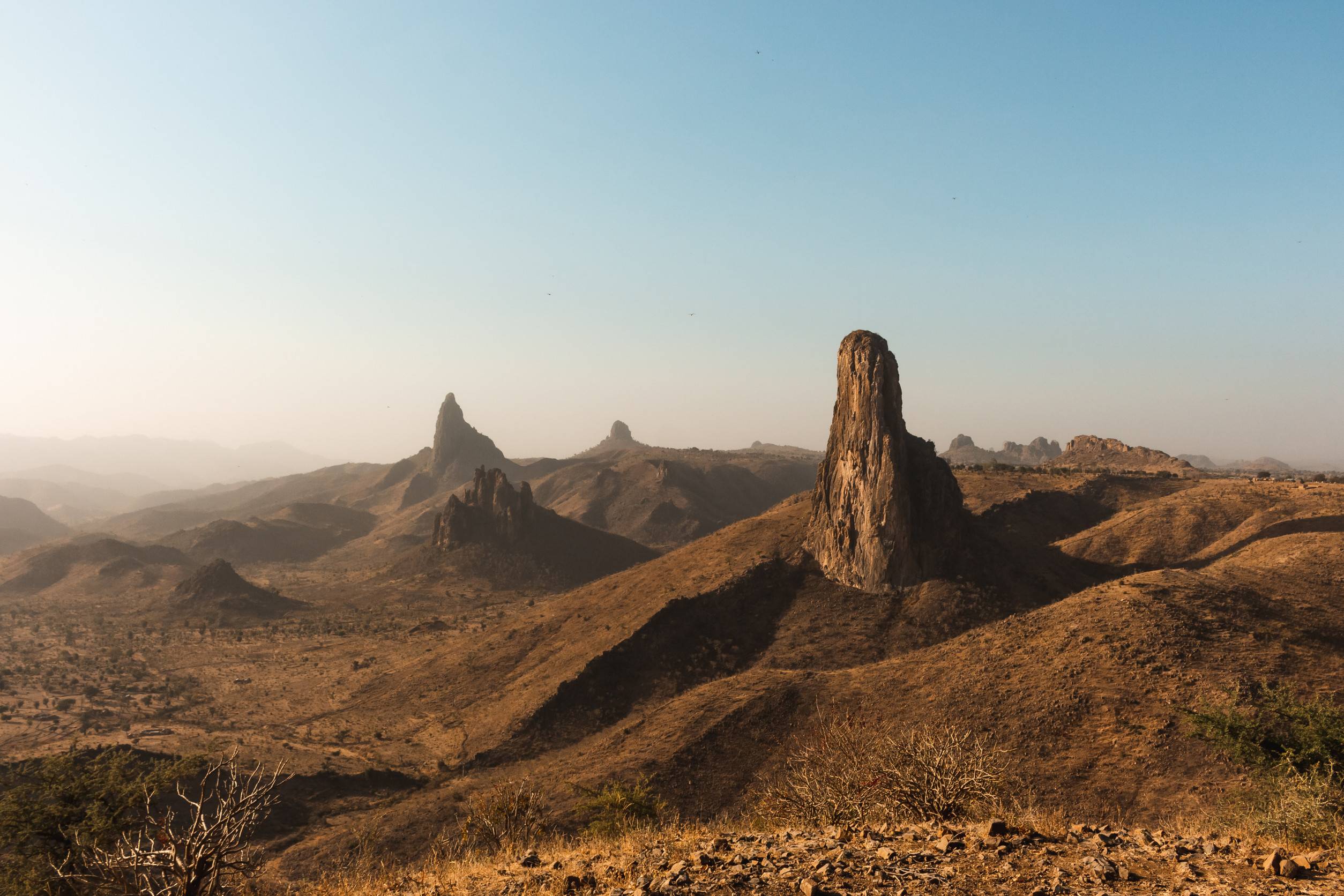
- History: The Kapsiki people have been living in Rhumsiki for centuries, preserving their traditional way of life and cultural practices. Kapsiki's arts and crafts are the centre of this historically rich village.
- Scenic Beauty: One of the main attractions of Rhumsiki is its breathtaking scenery. The village is nestled in the Mandara Mountains, surrounded by rock formations and lush vegetation. The most iconic feature is the Rhumsiki Rock, a towering granite formation that rises above the village, offering panoramic views of the surrounding landscape.
- Cultural Heritage: Visiting Rhumsiki allows visitors to experience the rich cultural heritage of the Kapsiki people. The houses are made from local stones and thatched roofs and have unique architecture. People still practice and celebrate the traditional way of life, customs, and rituals, which include traditional dances, music, and ceremonies.
- Handicrafts and Art: Rhumsiki is renowned for its handicrafts and artistic expressions. Local artisans produce intricate pottery, woven baskets, wood carvings, and traditional musical instruments. Anyone visiting must witness the skilled craftsmanship of the Kapsiki people and explore the craft markets.
- Trekking and Hiking: Due to the stunning natural surroundings, hiking and trekking are popular activities in Rhumsiki. Hire a knowledgeable local guide to enjoy and explore rugged terrain, discover hidden waterfalls, and encounter unique animal and plant species.
- Photography: Rhumsiki is a photographer's paradise because of its striking landscape, vibrant cultural activities and traditional architecture. The unique rock formations, scenic vistas, and colourful cultural events provide ample opportunities for capturing stunning images.
- Local Cuisine: While in Rhumsiki, visitors can enjoy Traditional Kapsiki cuisine. Some popular dishes include maafe (a peanut sauce served with meat or vegetables), ndolé (a bitter leaf stew), and fufu (a staple made from pounded yam or cassava). Rhumsiki's local cuisine speaks to the authentic flavours of the region.
2. Lake Nyos
Lake Nyos is known for a deadly volcanic eruption in 1986. This lake now serves as a research site and a scenic destination. The lake, located in the Northwest region of Cameroon, gained immense popularity following a tragic incident in which a sudden release of CO₂ resulted in the loss of many lives and livestock.
The incident highlights the importance of understanding and monitoring natural events to prevent disasters. The lake’s tragic history offers opportunities for scientific study and responsible ecotourism.
Learn in-depth information about Lake Nyos:
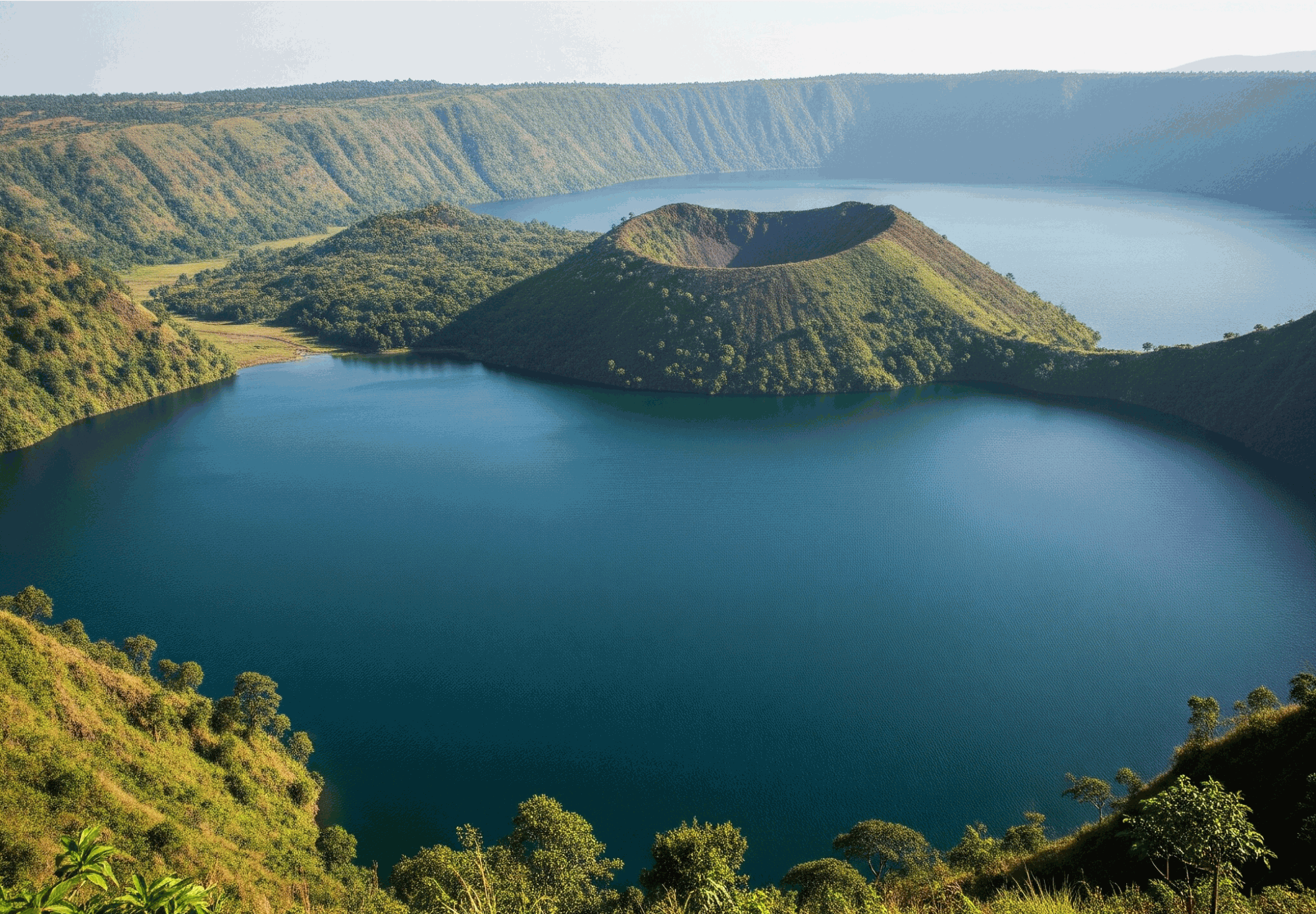
- Formation and Geography: Lake Nyos is a crater lake formed in the Oku Volcanic Field, which is part of the Cameroon Volcanic Line. It is situated within a volcanic crater and is one of the deepest crater lakes in the world. The lake is surrounded by steep cliffs, lush vegetation, and a diverse array of wildlife.
- Historical Incident: On August 21, 1986, Lake Nyos had a limnic eruption, or "lake overturn." A large amount of carbon dioxide accumulated at the bottom of the lake suddenly erupted to the surface in this rare event. The gas released replaced the oxygen in the air, causing the asphyxiation and death of more than 1,700 people and many animals in nearby villages.
- Scientific Research and Mitigation Measures: After the tragic incident, several scientific research and monitoring efforts have been implemented to prevent similar future occurrences by understanding the lake’s behaviour. Measures such as ‘degassing systems’ have been installed to gradually release the accumulated carbon dioxide from the lake, reducing the risk of another limnic eruption.
- Ecotourism and Safety: Lake Nyos attracts scientists and tourists due to its unique geology and the history of the limnic eruption. Safety precautions are necessary when visiting the lake due to the risk of gas release. Visitors should stay updated on current conditions and follow local authorities' and tour operators' guidelines.
- Environmental Significance: Several bird species consider Lake Nyos their home. These birds include elusive grey-necked rockfowl, or picathartes. The surrounding area of the lake is rich in biodiversity, with lush vegetation, wildlife and unique plant species. The government is making efforts to protect and conserve the lake and its surrounding ecosystem.
-
3. Benoue National Park
Located in Northern Cameroon, Benoue National Park is renowned for its diverse wildlife, including elephants and hippos. The park is home to buffaloes and numerous bird species.
More information about ‘Benoue National Park’ is provided below:
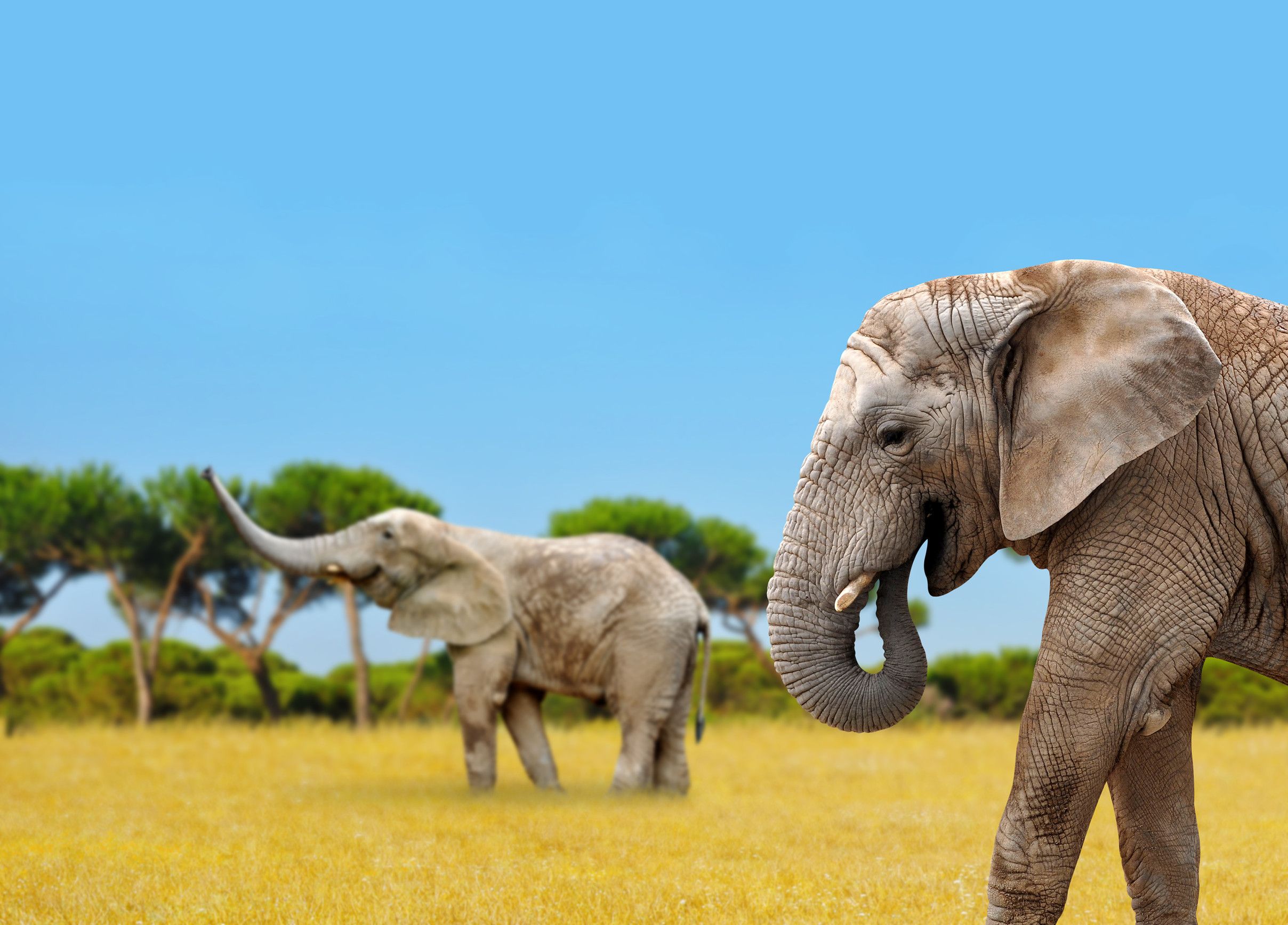
- Location and Geography: Bénoué National Park is in the North Region of Cameroon, covering an area of approximately 1,800 square kilometres. It is named after the Bénoué River, which runs through the park. The landscape is characterised by savannah grasslands, riverine forests, and gallery forests along the riverbanks.
- Biodiversity: The park is known for its diverse wildlife and is home to a wide range of animal species. Some of the notable wildlife found in Bénoué National Park includes elephants, lions, leopards, giraffes, hippos, antelopes, and various species of monkeys. The park is also a haven for birdwatching enthusiasts, with over 300 bird species recorded.
- Conservation and Protection: Bénoué National Park was established in 1968 and has since been protected to conserve its unique biodiversity. The park plays a crucial role in the conservation of threatened species and the preservation of the Sahelian and Sudanian ecosystems. Efforts are made to combat poaching and promote sustainable tourism within the park.
- Activities and Attractions: Tourists can engage in various activities to explore and appreciate the natural beauty of Benoue National Park. These activities include:
- Game drives allow visitors to spot wildlife in their natural habitat.
- Opt for guided walking safaris and boat trips along the Benoue River to encounter the park’s flora and fauna.
- Birdwatching, camping and hiking are also common.
- Cultural Significance: The park is located in an area inhabited by indigenous ethnic groups such as the Fulani, Kapsiki, and Koma people. Visitors to Bénoué National Park can learn about the rich cultural heritage of these communities through cultural tours and interactions with local communities. Traditional dances, handicrafts, and cultural ceremonies offer insights into the local traditions and way of life.
- Accessibility: Bénoué National Park can be accessed from the city of Garoua, which has an airport and serves as the gateway to the park. It is advisable to arrange visits to the park through authorised tour operators or with the assistance of local guides who are knowledgeable about the area and can ensure a safe and informative experience.
Bénoué National Park offers a unique wildlife experience and the opportunity to immerse oneself in the natural and cultural wonders of northern Cameroon. It is a destination that appeals to nature enthusiasts, wildlife lovers, and those interested in cultural exploration.
4. Dja Faunal Reserve
The Dja Faunal Reserve, located in southeastern Cameroon, is one of Africa’s largest and most well-preserved rainforest reserves. Designated as a UNESCO World Heritage Site in 1987, the reserve covers an area of approximately 5,260 square kilometres (2,030 square miles) and is recognised for its exceptional biodiversity and unique ecosystem.
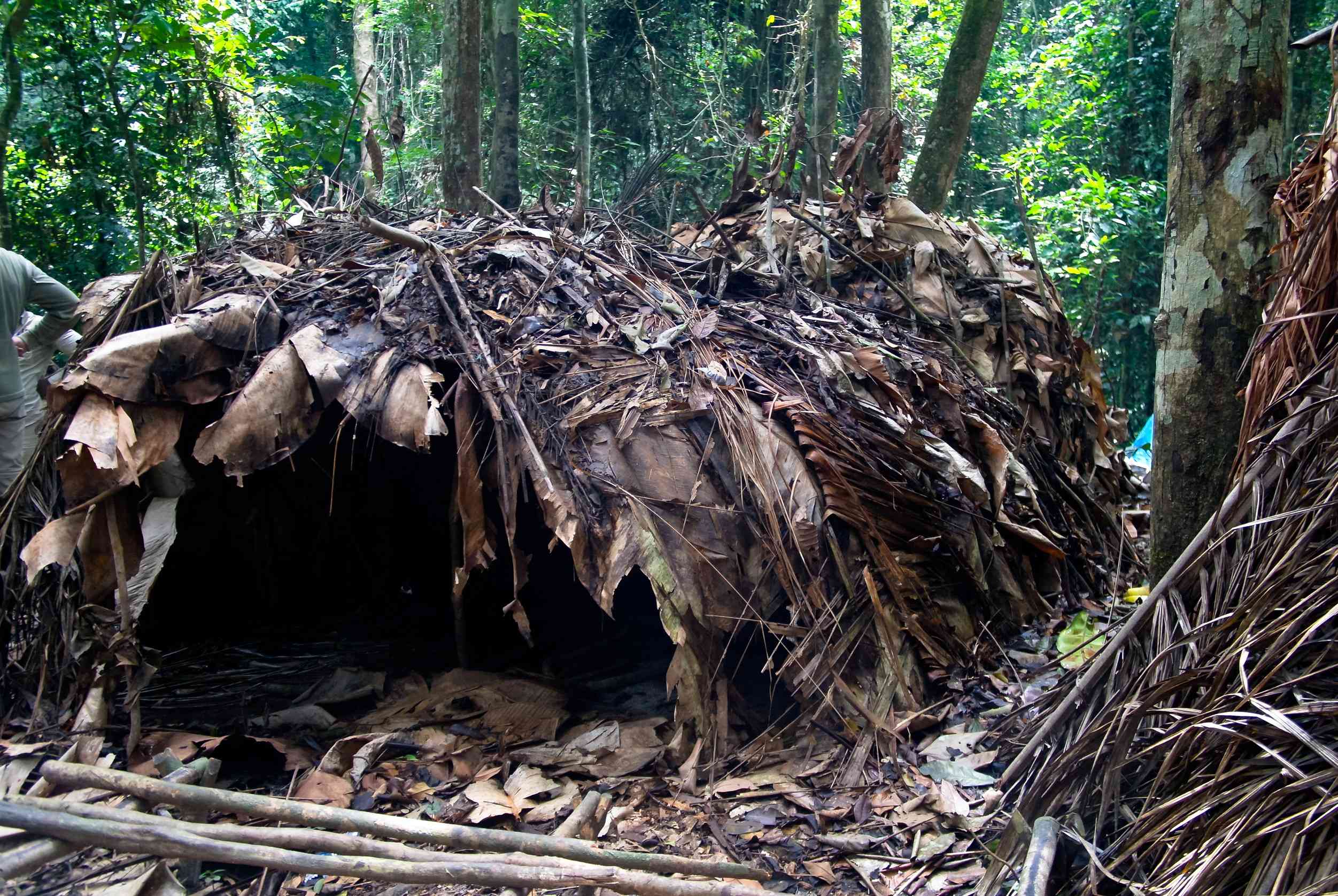
Learn More about Dja Faunal Reserve:
- Location and Geography: The Dja Faunal Reserve is situated in the Congo Basin, which is one of the world’s most significant tropical rainforest regions. It is bordered by the Dja River to the west and south and the Ngoko River to the north. The reserve's landscape is characterised by dense rainforest, pristine rivers, swamps, and occasional patches of savannah.
- Biodiversity: The reserve's primary conservation value lies in its rich biodiversity. It is home to an estimated 107 mammal species, including endangered and elusive species such as forest elephants, western lowland gorillas, chimpanzees, and giant pangolins. Additionally, over 320 bird species have been recorded within the reserve, along with numerous reptiles, amphibians, and fish species.
- Primate Sanctuaries: Within the Dja Faunal Reserve, there are two primate sanctuaries that play a crucial role in the conservation of endangered primates. These sanctuaries, namely the Mengame Gorilla Sanctuary and the Somalomo Chimpanzee Sanctuary, provide protection and a safe habitat for these highly threatened species.
- Cultural Significance: The Dja Faunal Reserve holds cultural significance for the indigenous Baka people who have lived in and around the reserve for centuries. The Baka rely on the forest for their livelihoods, utilising its resources for food, medicine, and traditional practices. Efforts are being made to involve local communities in the reserve's management to ensure their participation and the protection of their cultural heritage.
- Conservation Challenges: Despite its protected status, the Dja Faunal Reserve faces various conservation challenges. Illegal hunting, primarily driven by the bushmeat trade, poses a significant threat to the reserve's wildlife. Additionally, encroachment for agricultural activities, logging, and infrastructure development in the surrounding areas can lead to habitat degradation and fragmentation.
- Conservation Efforts: Several organisations, including the Cameroonian government, international conservation NGOs, and local communities, are actively involved in the conservation of the Dja Faunal Reserve. These efforts focus on anti-poaching initiatives, habitat protection, research and monitoring, community engagement, and sustainable livelihood alternatives for local communities.
- Ecotourism: The Dja Faunal Reserve offers limited but carefully managed ecotourism opportunities. Guided tours can help travellers explore the reserve and experience its cultural heritage, stunning landscapes, and remarkable biodiversity. Ecotourism serves as an important source of revenue for conservation efforts and raises awareness about the reserve's importance.
- Research and Scientific Importance: Many scientists and researchers worldwide have been attracted to the Reserve because of its exceptional ecological significance. Studies conducted within the reserve contribute to our understanding of tropical rainforest ecosystems, wildlife behaviours, and conservation strategies. Research findings help inform conservation policies and practices not only in the reserve but also in other, similar ecosystems globally.
The Dja Faunal Reserve in Cameroon showcases the wonderful biodiversity and rich cultural heritage of the Congo Basin. Even with the conservation challenges, the reserve is still a vital refuge for endangered species and an essential place for scientific study.
5. Bamenda Highlands/Western High Plateau
The Bamenda Highlands (also known as western high plateau or Bamenda Grassfield) is a picturesque region located in the northwest part of Cameroon. Bemenda Grassfield is known for its stunning natural beauty, vibrant culture, and unique geographical features.
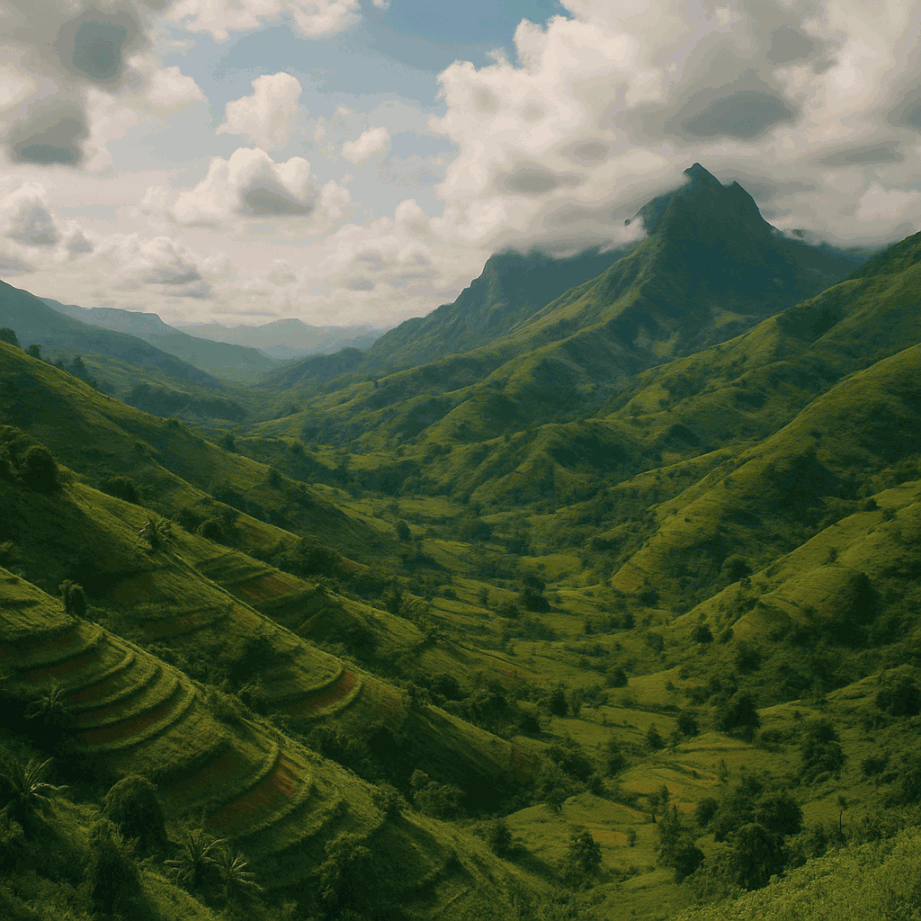
Detailed information on Bamenda Highlands is provided below:
- Geography and Location: It is situated within the Northwest Region of Cameroon, covering an area of approximately 2,000 square kilometres. It features elevated terrain, ranging from 1,000 to 2,000 meters above sea level. The highlands are part of the larger Cameroon Volcanic Line, which stretches across the country and is dotted with volcanic mountains and lakes.
- Climate and Biodiversity: The Bamenda Grassfield climate is pleasant and mild, often called ‘eternal spring,’ as the temperature here is cooler as compared to the other parts of Cameroon. Higher altitude results in cooler climate and regular rainfall. The region experiences a tropical highland climate, with average temperatures ranging from 16°C to 24°C (61°F to 75°F).
- Cultural Significance: Ethnic groups such as the Bamileke and Grassfields people live in this area. Rich cultural traditions, vibrant festivals, and unique artistic expressions are at the core of this group. Visitors to the region must experience the local culture and witness traditional ceremonies, dances, and rituals of these groups.
- Flora and Fauna: The Bamenda Highlands boast rich biodiversity with a variety of flora and fauna. The fertile volcanic soils support dense forests, grasslands, and numerous species of plants. The highlands are home to a wide range of wildlife, including primates, birds, reptiles, and amphibians. Some notable species found in the region include chimpanzees, colobus monkeys, hornbills, and frogs.
- Infrastructure and Accessibility: Several infrastructural and accessibility improvements have been seen in the Bamenda Highlands in past years. The city of Bamenda acts as the primary access point to the Bamenda Highlands, featuring an airport and extensive road connections that link it to other parts of Cameroon. Accommodation options such as budgeted guesthouses and upscale lodges, providing a comfortable stay for visitors, are also available for tourists to stay in over here.
- Cultural Festivals: The Bamenda Highlands host various cultural festivals throughout the year, showcasing traditional dances, music, and costumes. The Ngonso Festival and the Bamenda Cultural Festival are notable events that attract not only locals but also tourists.
- Cultural Villages: Visitors can explore traditional villages in the highlands, such as Bafut and Bali, where they can witness local customs, architecture, and daily life. These villages often have historical sites, including ancient palaces and sacred shrines.
- Hiking and Nature Walks: The highlands offer numerous trails and paths for hiking and nature walks, allowing visitors to discover the region's diverse flora and fauna. Guided tours are available to explore the scenic landscapes and hidden gems.
- Tourist Spots: The Bamenda Highlands have gained immense popularity among tourists seeking an off-the-beaten-path experience in Cameroon. The two main tourist attractions in the Bamenda Highlands are Mount Oku and Lake Awing
- Mount Oku: Rising to an elevation of 3,011 meters (9,879 feet), Mount Oku is the highest peak in the Bamenda Highlands and offers breathtaking panoramic views.
- Lake Awing: This picturesque crater lake is located near Bamenda and is surrounded by lush greenery. It provides a serene setting for relaxation, birdwatching, and boating.
The adventure starts here!!
A journey through Cameroon promises an authentic and memorable adventure, leaving you with a deeper appreciation for this remarkable continent.
FAQs
What is the local currency in Cameroon, and how widely are credit cards accepted, especially outside of major cities?
Currency is the Central African CFA Franc (XAF). Credit cards are mostly for major city hotels/supermarkets; cash is essential elsewhere.
What are some general cultural etiquette tips or customs tourists should be aware of when interacting with locals in Cameroon?
Always greet, especially elders. Dress modestly. Ask permission before photos. Bargaining is common in markets.
What is the typical trekking difficulty for popular trails in the Bamenda Highlands, and what level of fitness is required?
Difficulty ranges from easy to strenuous. A moderate fitness level is generally needed for most trails due to varied terrain and elevation.
What are the specific bird species that birdwatching enthusiasts can hope to spot in Benoue National Park?
Over 300 species, including storks, herons, eagles, kingfishers, African Grey Hornbills, and Abyssinian Rollers.
Applying for a Cameroon eVisa
- Step 1: Complete the online application form with your personal details and passport information.
- Step 2: Proceed to securely pay online using your credit card.
- Step 3: Check your email for payment confirmation and receipt of your Cameroon eVisa, which will be sent electronically.

